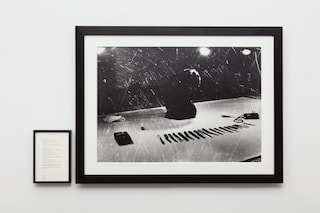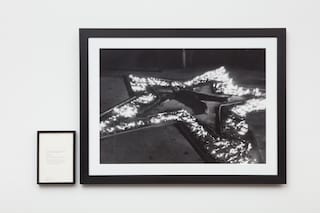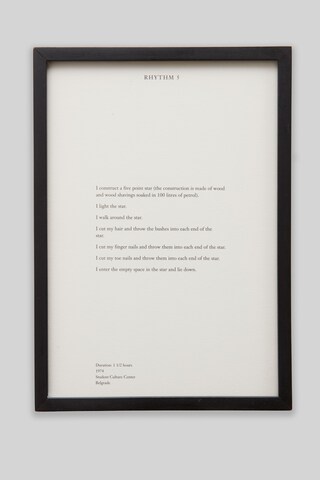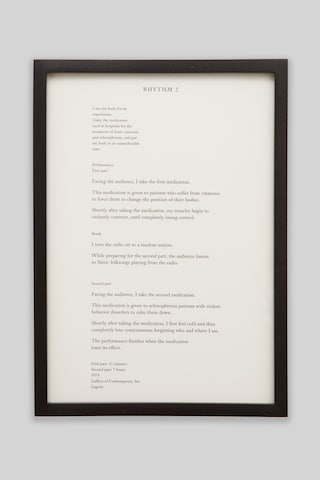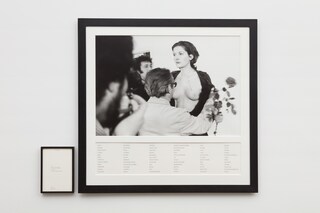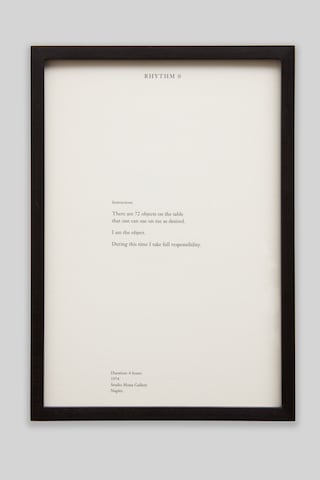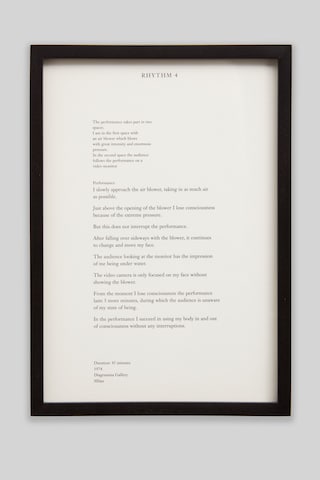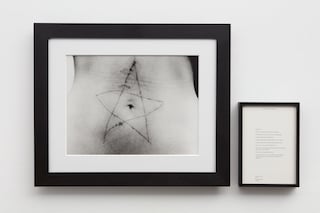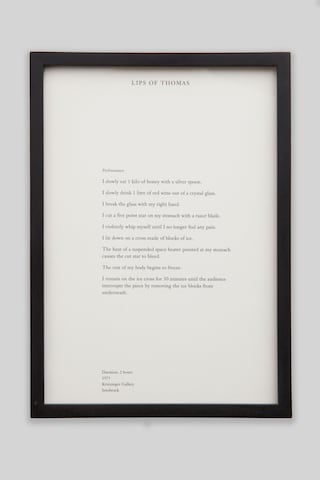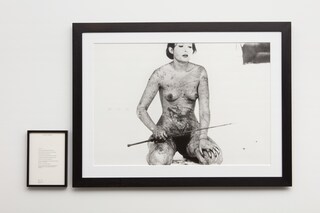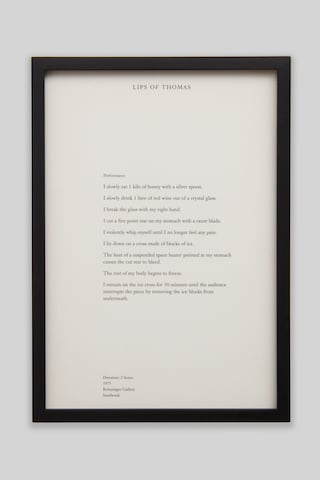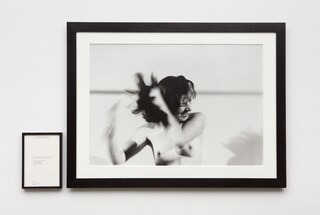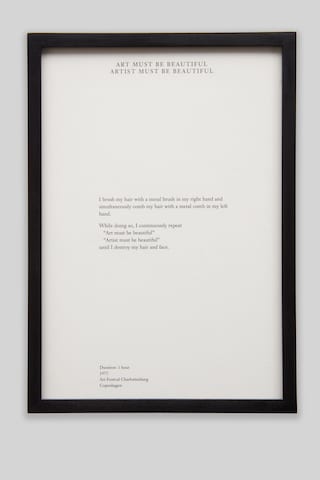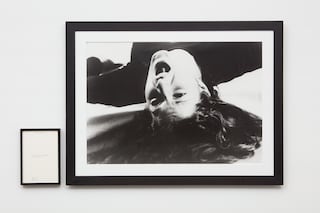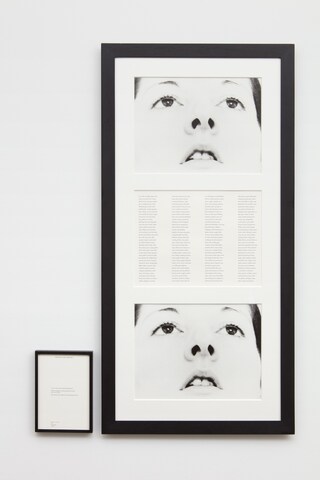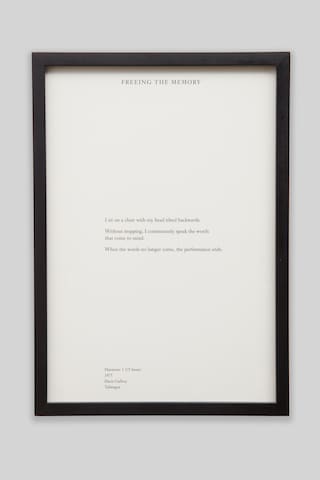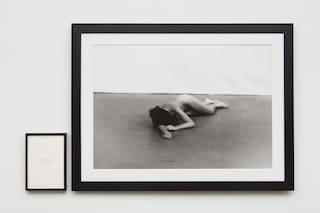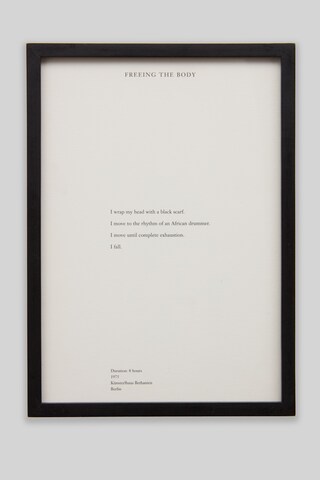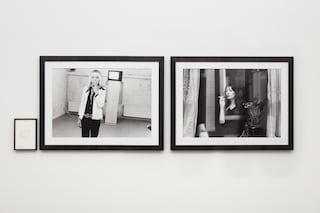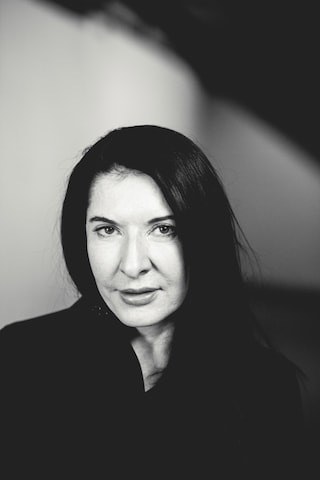There are some people who walk among this world at odds with the society around them. Born too early for their time, often their work becomes the turning point of a generation. Avant-gardes are torn down and new ones built up; what was criticised becomes the norm and new artists and art forms emerge from this conflict. It’s with this in mind that we consider Marina Abramović, daughter of two Yugoslav Partisans, both of who had been long commemorated as national heroes. Amongst a childhood spent practising the rituals of the Serbian Orthodox church and reading the great French poets – her mother’s favourites – the beginnings of Abramović’s fascination with performance begin to flourish. An obsession with rituals, the burning of candle wax and of the body as a site for painful, emotional exploration; it’s in her early works that we see these deeply rooted memories of a life now long gone.
Since then, Abramović has captured something of a unique position within the psyche of the art world. Courting controversy and public shock from early on in her life, the artist has since become a darling amongst celebrities, critics and curators alike, an unshakeable force that maintains a prolific working life despite having the means to retire a hundred times over.
Works like “Rhythm 0”, “The Artist is Present”, and “The Great Wall of China”, have all immersed themselves into the very fabric of popular culture, a rich seam in contemporary art history through which Abramović turned performance into the medium of the 20th century. Feats of bodily endurance, the outpouring of raw trauma, and the creation of communities through the medium of art are trademarks of her artistic labour. In the words of Ambramović herself, what is truly fascinating is the ways how performance transcends the audience and ultimately becomes a methodology to free herself. “Don’t listen to anybody or anything,” she purrs across the phone line.
From self-harm and sacrifice to advice on love and why embracing drama is the best form of post-breakup therapy, we caught up with Marina Abramović to discuss her show, Early Works, at Sean Kelly Gallery in New York.
“When I started working in performance, it was like a bomb in the family” – Marina Abramović
Growing up in Belgrade, Yugoslavia, following the war, I’m curious to know about your childhood in the Serbian Orthodox Church. And the ways in which your exposure to rituals around spirituality informed your ideas about performance, art, and the power of group experience?
Marina Abramović: When I was born, I was given immediately to my grandmother because both my parents were busy with their political careers, helping to build (Yugoslavia) into a communist country. My grandmother was very religious and didn’t actually like communism, so our days were very simple; wake up very early, make Turkish coffee and then go to church. She would grind these burnt green beans into a fine powder and it would make this coffee like you’ve never seen or smelled. Then we would go to church and I would be surrounded by these rituals and candles. That was how my day was divided; coffee in the morning and prayers at night. It was the complete opposite of the communism around us. And she baptised me! Which was completely illegal at the time and my mother and father were heavily criticised for allowing this to happen, although there was nothing they could have done.
Coming back to my parents at six years old when my brother was born, I started having a completely different education and so, I was instilled with this completely new attitude to life, to the things you can and can’t do. My mother was very much influenced by French literature, French education; everything French was good. I had to learn to speak French as well as my own language. And you know, my father was all about Stalin, Lenin and Trotsky, so there was all this division going on in my head. Spiritualism on one side, French culture on another, and Russian on the third side. Though my father was a ‘real communist’, my mother was bourgeois. She came from a very wealthy family, but during her education in Switzerland, started to read communist literature. What this education instilled in me was an incredibly strong determination and strong power that you must always sacrifice everything for the cause. It was a perfect mix.
When I started working in performance, it was like a bomb in the family... for so many years. But in my performances, there were lots of rituals too, so I was mixing all that in my own way, creating this performance recipe.
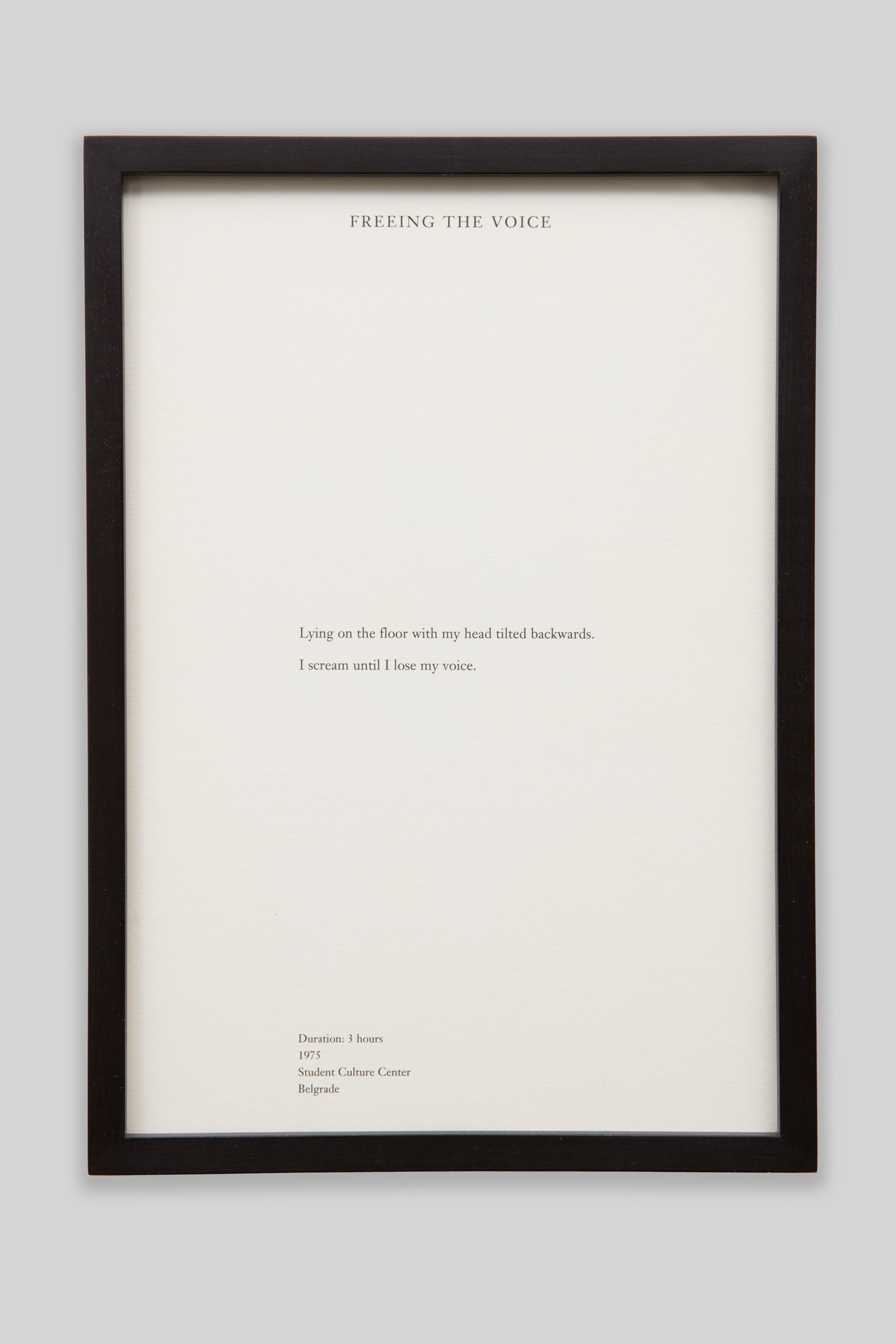
You’ve previously spoken about your parents’ marriage and the abuse at the hands of your mother – how did you come to realize that performance could become a means to deal with these emotions?
Marina Abramović: You know this is still a process. Looking back it’s so much clearer to me now than when I was doing it. I really didn’t know what was happening to me. Sometimes it takes 50 years and really working on yourself to truly understand fully what was going on. First of all, I was very afraid of blood to start with. As a young child, I had very heavy bleeding, so if I was to lose a tooth I’d be bleeding for three months non stop. I’d have to sit up straight to not choke on my own blood. When this condition disappeared when I was 17, it became part of my performance and body art.
The razor became an instrument to paint on your body and blood was the colour. Cutting the skin became so much more to me than to other people who didn’t have this condition. I always thought, in the back of my mind, I could just bleed death, it was a huge fear. But I had to confront all my fears. It’s the only way to survive this society, to have courage. Both my parents are national heroes so I had this example of, “no matter what, you have to do it”, so I had that kind of determination.
Each time I would do a performance, I would use it as a tool to actually deal with my emotions, to stage my feelings, and to go through the things I was afraid of. Doing this in front of an audience was so incredibly rewarding that I will never go back to any other medium like painting or sculpture. Performance went far deeper, it was a guided communication with the public.
Of course, I understand now that through this sharing it was making it much easier. So it’s very interesting, how, many years later I worked with Robert Wilson when I asked him to direct The Life and Death of Marina Ambramović (2012). During this time I was telling him all the most awful stuff and I was crying constantly in rehearsals all the time because I could not deal with the pain of these memories. Then one time he said to me, “Why are you stupidly crying, you’re not supposed to be crying, the public is meant to cry.” Finally, coming to the premier and playing this theatre piece for three years as it toured around, I became completely liberated. In that faith where you project into the public, the public projects back into you and it freed me completely.
It’s like you were exercising these demons from your past in the most carnal way possible.
Marina Abramović: It’s very difficult also because for me it was a way of staging the things which I was ashamed of. I was ashamed of my mother and father’s violence, I was ashamed of certain things about me, but then you share all of this with the public and it’s incredible because all of us have this shame and we always try to hide it. However, I found that showing vulnerability, that is the greatest thing ever.
I want to discuss the idea of the audience because you were publicly staging grand versions of what many people do privately. Taking the pathos and agony of self-harm and making it public is extremely courageous, but it’s also very curious – because it implicates the viewer in the experience. Take “Rhythm 0” (1974) and “The Artist is Present” (2010), how did having an audience become a catalyst for these works, and how did their responses inform or inspire you during the performance of the works?
Marina Abramović: It’s really important to mention these two performances, “Rhythm 0” and “The Artist is Present” because they are so diametrically opposed to each other. At the time, “Rhythm 0” was heavily criticised and seen as sadistic and “performance bullshit” and that it wasn’t art and I should be put in a mental hospital… people were so aggressive towards this form of art generally. So when I performed “Rhythm 0”, I wanted to give the audience every opportunity, for pleasure for pain, for tenderness and also the possibility of death; to kill me with one bullet and pistol. I wanted to see what the public would do If I didn't do anything and so I gave them these instruments.
I was really lucky to not be killed because somebody picked up the pistol and would have used it but other audiences members intervened and a big fight started. So this piece was the real example of what would happen if you give everything to the public.
Twenty-five years later I staged “The Artist is Present’. You can very easily put the spirit of the public down, but I wanted to give them different instruments and lift their spirits instead. You get two very different results. These two are opposite performances. In one I was 23 years old, and the other, 65, and together they tell you everything about the relationship I have with the public.

In an interview with Sean O’Hagan for The Guardian, you stated, “To be a performance artist, you have to hate theatre, Theatre is fake…” Where does this hatred come from? Is it the art of fakery by professionals that is enraging? Or is it that people seem to prefer – or at least want to pay money to be entertained by – artificial versions of reality?
Marina Abramović: I said that when I was very young, it was the same way you have to hate your parents in order to establish your identity. I could not like theatre at the time when performance was such a new form, and performance was so fascinating and real for me. Unlike theatre, It wasn’t what you see – it is what it is. You don’t need to play somebody else you just have to be.
It wasn’t until I became comfortable in my role as a performance artist that I started working with theatre. I remember when I was staging my own life and it was so strange to consider the artifice. What does it look like from the outside? Is what we are showing right? You can see this particularly in the first piece I made after my separation with Ulay, “The Great Wall of China” (1998). I was in so much pain the only way for me to deal with my pain was for me stage it as a theatre piece.
Of course, when we’re talking about theatre I have to talk about my work with Robert Wilson. When I was working with Robert, everything was fake; everything was theatre; it was all performance. William Dafoe was part of the project and through working with him I saw how he approached acting and suddenly I really understood... You can go so deep into the role or the person you’re performing that you become that role. As a result, I’ve become much more polite (laughs) because I don’t need to fight against theatre. Both are two art forms with incredible depths.
“It’s so important – especially as advice for women – to not be afraid to love and to love completely. Yes, you’ll have to suffer like hell – but never do anything halfway, just go for it. Love, hate, and passion is all a part of life” – Marina Abramović
Going back to “The Great Wall of China”, I read a lot about the performance when I was going through my own breakups and I found it very comforting to have that pain reflected back in a way that was cathartic.
Marina Abramović: It’s true. Can you imagine, I walked 12,500 kilometres for us to just say goodbye. At the time it felt like everything was crashing all around me. All this pain – it completely consumed me. During the rehearsals of the performance of my life with Willem Dafoe, he gets to the part at the Great Wall of China, and he says to me, “Isn’t it better just to make a phone call rather than walk 12,500 kilometres?” (Laughs) Oh my god. A phone-call – I’ll never do a phone call! I have to do something dramatic... I have Slavic in me you see.
I’ll take that advice from now on – to just throw myself into drama. It’s probably far healthier and more positive in the long run.
Marina Abramović: It’s so important – especially as advice for women – to not be afraid to love and to love completely. Yes, you’ll have to suffer like hell – but never do anything halfway, just go for it. Love, hate, and passion is all a part of life.
The themes that you took on are deeply personal, often private subjects that have long been taboo and often silenced. Were these issues drawn from specific experiences or observations in your life? If so, could we discuss how one or two of them began as experiences or observations and were transformed into performance?
Marina Abramović: I think it’s the most important thing for an artist to ask themselves is, “am I really an artist?” If they are, then which medium is the best medium to serve themselves and society? In this way, I am so lucky that I fell into performance at an early age.
One thing that fascinated me about performance at that time and still now, is the immateriality. It’s so immaterial, and in the beginning, when you’re a young artist you make so much material because you are scared you are not enough. Constantly you have to make more and more through youthful insecurity. Once you really get to the stage of being comfortable, you start to understand that you can create your own field and create a direct communication with the audience. Once you find that, you find the entrance point to another world.
It’s all about consciousness, state of mind and transformation. There’s always an element of transformation that I found in performance which lasts longer than the short term. It can go on for long periods of time and it’s these works – where duration is part of it – where I feel like the connection is really made with the audience. If you do something for an hour or two hours, yes it’s a performance, but create something that lasts, two months, three months…then it becomes life.
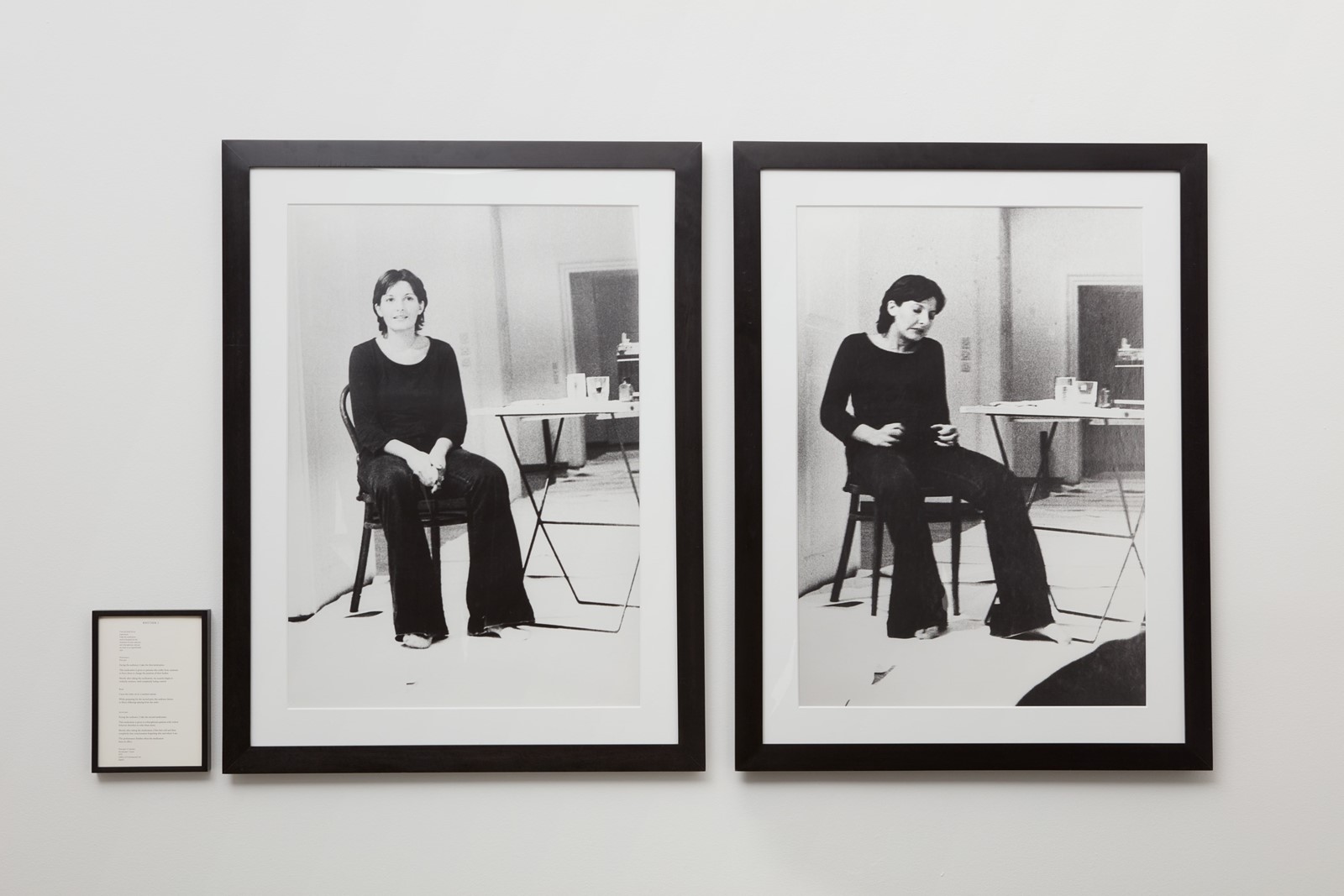
Expanding on performance as life, how did the rituals of performance help you deal with these issues? Were all the experiences cathartic in a way that was healing, or at times were you damaged by the act of performing? How did testing your limits publicly create a space for personal transformation?
Marina Abramović: Repetition is such an old structure. In different cultures around the world, all the ancient civilisations and ceremonies are based, in some way, on repetition. I ask my students to just open and close the door without entering and without exiting. Just doing the action of opening and closing the door. When you do this for three hours the door stops being a door. it becomes a universe – it becomes something else. The sense of transformation that takes place even in these simple rituals is incredible. If everybody stopped looking into their phones they would be able to see this better.
We look at our phones because we are too scared of being alone. We do not want to see inside ourselves, so that’s another problem. That is why a number of my works deal with communities. Twenty years ago, people were doing these rituals on their own by themselves, whereas now you have to teach them how to be comfortable with themselves again.
Our generation is guilty of that. I’m on my phone more than I should be and it’s interesting how your performances started from a period in time when technology was far less advanced than it is now. Has technology influenced your performances in any way or is that something you don’t need to think about in your practice?
Marina Abramović: There was a prize winner I met at a dinner and he said to me, “The human brain in the past 20,000 years hasn’t changed, yet technology has become so much more advanced that, now the human brain has evolved – it’s not the same anymore.” I think that if we don’t go back to simplicity, we as a human race are lost. So this is what I’ve been doing, going back to simplicity.
When I was at the Serpentine Gallery (for “512 Hours” (2014) I gave some 12-year-old kids headphones, and they asked me why I had given them headphones that didn’t work. But the headphones were meant to be for silence. One kid was so shocked. His friends were all 12 and 13 years old and they’d never really experienced silence. They were always listening to music or watching TV or chatting with each other, they never just sat in silence. They became so fascinated and receptive to it and started doing it at home, getting headphones and using them to sit in silence. Nothing is wrong with technology it’s our relationship with technology that is bad.
It has been said that “life follows art.” Your courage to address the issues of the human and female condition were necessary steps in reaching a point today, where the mainstream is finally starting to talk about these issues publicly. Looking back at the work that you did, how did you find the strength when you were young and working outside of the art world to expose these dark spaces?
Marina Abramović: It’s incredible. But I never see the difference between a man and woman. I always say, “yes I’m a female, but I’m an artist.”
I won’t wait 10 or 15 years to feel like I’m able or allowed to say something. I will make a mess – in huge proportions – and I think my general problem in my own life is that men are afraid of me. That’s the problem. (Laughs) I’m independent; I don’t depend on men in any way; and I always say what I think and I do whatever I want. I am free. This is because I do things from a place where I really believe in my work, with complete conviction. If you have conviction and self belief, then you are completely protected by your own strength. Women have to be warriors these days.
That’s something that I see in your work, that it is so inspired by your own convictions and beliefs.
Marina Abramović: Completely. This sense of freedom is so important, as well as incredible curiosity. I’m 71 now – it’s crazy. And yet, I am so curious like a child. I wake up in the morning and everything is new. This worshipping of the present and of life is so integral to the human experience. For me, it’s so necessary to have a sense of purpose throughout everything; to know why you are here; why you were born; what is my function? This was always something I was asking myself. What are we in this universe? These big questions have helped me on the road.
“If you do something for an hour, or two hours, yes it’s a performance, but create something that lasts, two months, three months…then it becomes life” – Marina Abramović
Do you have any insights or wisdom for a new generation of young people who are inheriting the world that we have made?
Marina Abramović: How old are you now?
I’m 22.
Marina Abramović: Oh my god. This is my favourite audience, by the way. Something I find really phenomenal and that I’m really pleased with, is that my work is visited far more by young people than the older generation – my generation. If I give a big talk with 3,000 people, I always ask who is the youngest person in the audience and there will be someone there who is 12, 13, 14 years old. Young people in their 20s and 30s will make up the majority of the audience and it really adds to my life. It makes me feel like I’m saying something that the young generation can really address in their own life. This is really important when I think about advice. So what advice would I give you, what advice would I give young people?
My first piece would be to stay true to yourself. Don’t listen to anybody or anything. Don’t be afraid of anybody or anything, and really follow your intuition, follow your heart, and do things that you want to do. Not because you’ve been told to do it, or because society wants you to do it. You have to find yourself. Only when you find yourself can you be truly happy. So take every day as if it’s the last day of your life because we can only live in the now.
Tomorrow hasn’t happened and the past has already occurred. The only reality is now, so live every day like your last because life is so precious and magical. That is my suggestion.
Marina Abramović: Early Works is on show at New York’s Sean Kelly Gallery until 17 March, 2018. A special thanks to Miss Rosen for helping make this article happen

